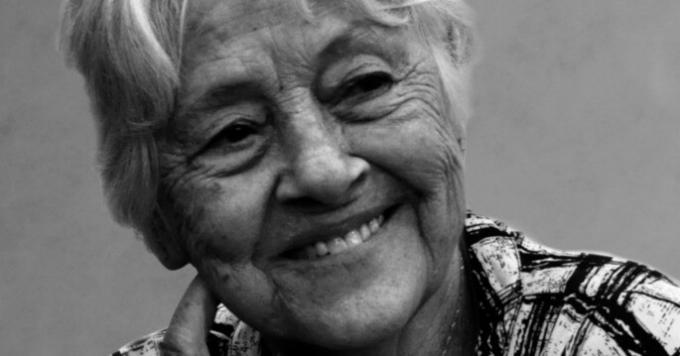The literary production of the second phase of the modernist movement in Brazil (1930-1945) is headed in poetry by Murilo Mendes, Jorge de Lima, Carlos Drummond de Andrade, Cecília Meireles and Vinícius de Moraes.
In prose, the highlights are: Graciliano Ramos, Rachel de Queiroz, José Lins do Rego, Jorge Amado, Érico Veríssimo and Dyonélio Machado. This group became known as the generation of 30.
Main representatives of the poetry of 30
1. Murilo Mendes
Murilo Mendes (1901-1975) had a strong identification with European Surrealism. This trend is noted in his first book. poems, published in 1930.

The poet goes from satire to joke-poem and reaches style oswaldian. He also walks through religious and social poetry. Check out a poem by the writer below:
Solidarity
I'm linked by the heritage of spirit and blood
To the martyr, the murderer, the anarchist,
i'm connected
To couples on land and in the air,
On the corner,
To the priest, the beggar, the woman of life,
To the mechanic, the poet, the soldier,
To the saint and the devil,
Built in my image and likeness.
2. Jorge de Lima
Called the “prince of Alagoas poets”, social and religious poetry is verified in the mature phase of Jorge de Lima (1895-1943).
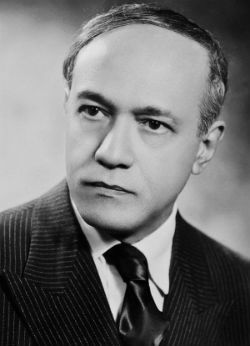
Before that, he traveled in the Parnassian style. In Modernism, however, it denounces social inequalities and uses skilful poetic expression and elaborate wordplay.
proletarian woman
Proletarian woman - only factory,
That the worker has, (children's factory)
You
In your overproduction of human machine
You provide angels for the Lord Jesus,
You provide arms for the bourgeois lord.
proletarian woman,
the worker, your owner
Must see, must see:
Your production,
Your overproduction,
Unlike bourgeois machines
Save your owner.
3. Carlos Drummond de Andrade
Drummond was the forerunner of poetry of 30 with the publication of the work "Some Poesia".
Current events and events surround the poetry of Carlos Drummond de Andrade (1902-1987). His poetic work reproduces the world, the Second World War and the Cold War.
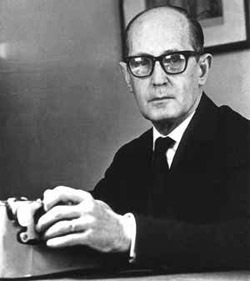
Due to these characteristics, it denies the escape from reality because poetry is seen as a means of transformation.
Below is an excerpt from the poem to letter to Stalingrad:
After Madrid and London, there are still big cities!
The world is not over, as among the ruins
other men appear, their faces black with dust and gunpowder,
and the wild breath of freedom
dilate your breasts, Stalingrad,
your breasts that pop and fall,
while others, avengers, rise.
Poetry escaped from books, is now in the newspapers.
Telegrams from Moscow echo Homer.
But Homer is old. Telegrams sing a new world
that we, in the darkness, ignored.
We found him in you, destroyed city,
in the peace of your dead but unconformed streets,
in your gasp of life stronger than the explosion of bombs,
in your cold will to resist.
4. Cecília Meireles
The main feature of Cecília Meireles (1901-1964) is intimate poetry that has an introspective character and an air of fantasy.
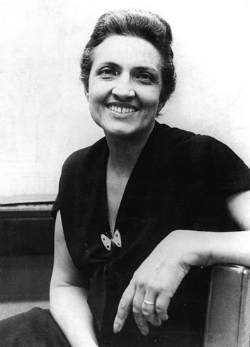
Considered one of the greatest poets in Brazil, her production at this stage was very important to consolidate the modernist group of poetry in the 1930s.
Check out an excerpt of the poem below. Novel XXIV or the Banner of Inconfidence:
Through thick doors,
lights are on,
— and there are detailed inquiries
within the border houses:
eyes glued to the glass,
lurking women and men,
shapeless guys from insomnia,
watching over the actions of others.
Through cracks in the windows,
through the gaps in the mats,
sharp arrows shoot
envy and backbiting.
conjectured words
waver in the air of surprises,
like hairy spiders
in the goo of dense webs,
fast and poisoned,
ingenious, sneaky.
5. Vinicius de Moraes
In addition to being a renowned writer and great prominence in the poetry of 30, Vinicius de Moraes (1913-1980) was one of the precursors of Bossa Nova in Brazil.
 Erotic sensualism, love and the pleasures of the flesh are highlighted in his poetry. In his work, the writer speaks of happiness, unhappiness, joy and sadness.
Erotic sensualism, love and the pleasures of the flesh are highlighted in his poetry. In his work, the writer speaks of happiness, unhappiness, joy and sadness.
Dialectic
of course life is good
And joy, the only unspeakable emotion
Of course I think you're beautiful
In you I bless the love of simple things
of course i love you
And I have everything to be happy
But I happen to be sad.
Main representatives of the prose of 30
1. Graciliano Ramos
the northeastern Graciliano Ramos (1892-1953) was arrested in 1936 and accused of being a communist. This experience in various prisons was the basis for one of his most famous novels: Memories of Prison. The book reports the injustices of the Estado Novo and the Brazilian reality of prison.

He portrayed the universe of the northeastern sertanejo from the farmer to the common caboclo. He was able to carry out psychological and sociological analysis in his work, in characters that relate the collective.
In addition to novels, Graciliano Ramos also wrote short stories. Among his best-known novels is "Dried lives", in Machadian style, with a rigorous, clean and meticulously crafted language.
On the reddish plain, the juazeiros enlarged two green patches. The unfortunates had walked all day, they were tired and hungry. Ordinarily they walked little, but since they had rested a lot on the sand of the dry river, the journey had progressed well three leagues. They had been looking for a shadow for hours. The foliage of the juazeiro trees appeared in the distance, through the bare branches of the sparse catinga.
They crept towards it, slowly, Sinha Vitória with her youngest son straddling her room and the leaf chest on her head, Sombre Fabiano, wobbled, the yo-yo in the shoulder, the gourd hanging from a strap attached to the belt, the flintlock shotgun in the shoulder. The older boy and the Whale dog followed.
(Excerpt from the work Vidas Secas)
2. Rachel de Queiroz
First woman to join the Brazilian Academy of Letters, from Ceará Rachel de Queiroz (1910-2003) was a contributor to the newspaper Ceara. In it he published several poems and chronicles.

A militant of the Brazilian Communist Party, she was arrested in 1937, seven years after the publication of one of her best-known books, the fifteen.
Among its characteristics are: use of direct speech, lean prose and intense social concern. He also wrote: Stone path, The Three Marys and Maria Moura Memorial.
The people crowded the avenue, the money circulated happily, the carbide lamps splashed over the hubbub very white light spots, which made the moon's sharp face dull and sad growing. In a group, in a lighted corner, Conceição, Lourdinha and her husband, Vicente and the new dentist in the land - a young man fat, plump, with curly sideburns and the pince-nez always barely held in his round nose - they chatted animatedly.
(Excerpt from O Quinze)
3. José Lins do Rego
José Lins do Rego from Paraíba (1901-1957) was elected to the Academia Paraibana de Letras and the Academia Brasileira de Letras in 1955. At this stage, his regionalist novels were essential to consolidate the so-called romance 30.

Stand out in his work: ingenuity boy, crazy, bang, dead fire and Power plant, all with the theme of sugar cane. Beautiful stone and the Cangaceiros, depict the cycle of cangaço, drought and mysticism.
Those boys, those women, that Colonel Lula, all of the world around him were bars of iron that bound him, that made a hardworking man like him a monster, a danger, a criminal. The daughter was gone. He thought that Sinhá was back to good, but he was wrong. He was alone in the world, more alone than José Passarinho. And he had no health to gain across the land, and run away from everyone. Werewolf! Did men, women really take him for a child of the devil, for a calamity? José Passarinho, inside the house, now seemed another man to him. It has been a long time since the black man drank. It was, there in his house, who cooked his beans, who did things for him. He was a good black man. She saw him dirty, with drooping feet, with a half-dead look, and even so she thought he was happier than he was.
(Excerpt from Dead Fire)
4. Jorge Amado
the baiano Jorge Amado (1912-2001) is one of the most popular writers in Brazil. He became known from 1931, with the novel "The Country of Carnival" and then, "cocoa and sweat".
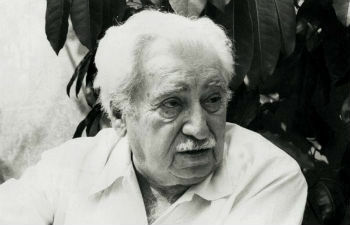
He was elected in 1959 by the Brazilian Academy of Letters and among his best known works is Tieta do Agreste.
Dozen, dozen and a half of temporary shacks, moving at the whim of the wind and sand to invade and bury them, home of the few fishermen to live on this side of the bar. During the day, the women fish in the mangrove for crabs, the men cast their nets overboard. Sometimes they set out on miraculous fishing, daring to cross the waves as high as the dunes in the only boats capable of face them and continue out to sea, to the meeting marked with ships and schooners, on pitch nights, for the disembarkation of the smuggling.
(Excerpt from the work Tieta do Agreste)
5. Érico Verissimo
the gaucho Érico Verissimo (1905-1975) began working at Revista do Globo as a secretary in 1930. He entered literary journalism under the influence of Augusto Meyer.
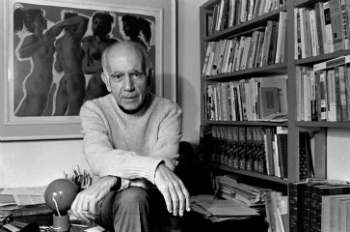
Among his outstanding works are: "puppets" and "Clarissa". Her masterpiece is the trilogy "The time and the wind", where it narrates the socioeconomic and political formation of Rio Grande do Sul, from its origins, in the 18th century, until 1946.
It was a cold full moon night. The stars twinkled over the city of Santa Fe, which was so quiet and deserted it looked like an abandoned cemetery. There was so much silence and so light the air that if one listened, perhaps he could even hear the serene in solitude. Crouched behind a wall, José Lírio prepared for the last race. How many steps from there to the church? Maybe ten or twelve, really hard. He had been ordered to take turns with his companion who was on watch at the top of one of the Matrix towers. “Lieutenant Liroca,” the colonel had told him a few minutes ago, “go up to the top of the bell tower and keep an eye on the Sobrado's backyard. If someone appears to draw water from the well, make a fire without mercy.
(Excerpt from the work The weather and the wind)
6. Dyonelio Machado
Also from Rio Grande do Sul, Dyonelio Machado (1895-1985) also worked as a journalist for the newspaper People's Mail. Writer and psychiatrist, he received the Jabuti prize in 1981.

His works are marked by intimacy, social problems and human relationships. Wrote "The rats", "Cati's Loco", "Desolation" and "economic gods".
With a glance, Naziazeno realizes that the game is almost done. Snowily he reaches into his pants pocket and pulls out the five milreis. I had made the purpose, the promise, almost! - To play on 28 the first day I entered roulette again. The ball is already spinning. The accustomed look easily finds the 28. A passage has already opened. His arm reaches out, taking the five milreis to that number. But prudent fear stops him. And as time is running out, he quickly deposits the ballot in the rectangle of the third dozen.
(Excerpt from The Rats)
Read too:
- Modernism in Brazil
- Characteristics of Modernism
- The Language of Modernism
- Modernism in Brazil: characteristics and historical context
- Authors of the First Phase of Modernism in Brazil
- 16 greatest modern and contemporary Brazilian poets
- Exercises on the second generation modernist


